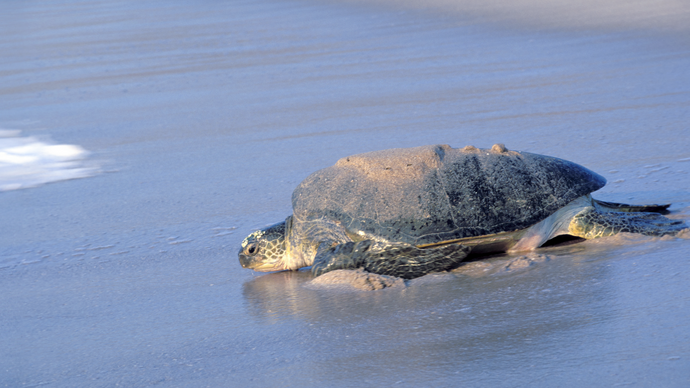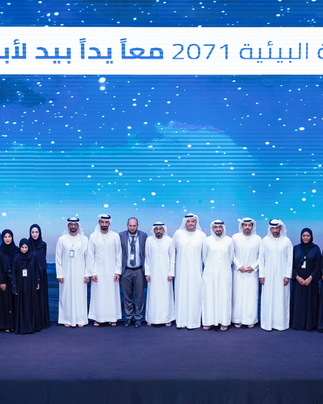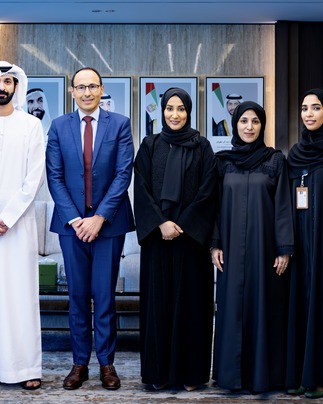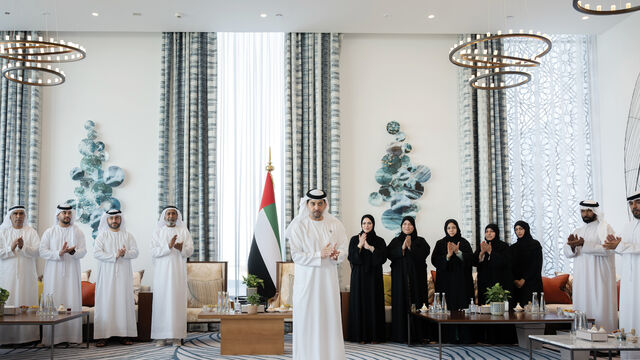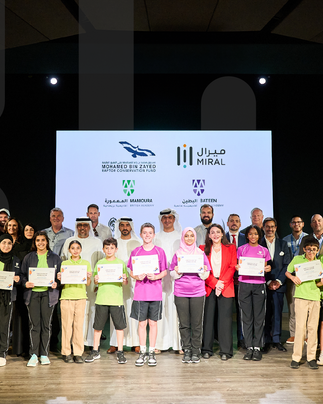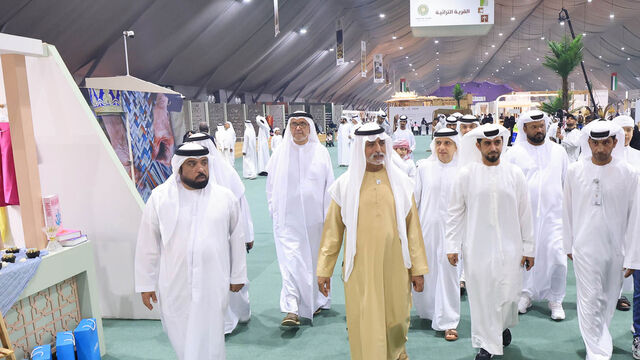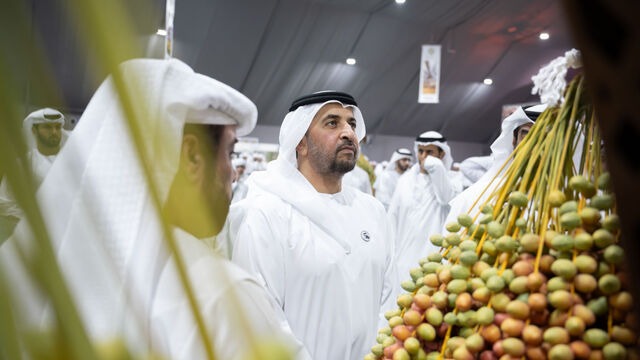During its annual turtle survey and as part of the marine assessment and conservation programme, the Environment Agency – Abu Dhabi (EAD) recorded the first nest of green turtles at one of the core Hawksbill turtle nesting sites in Al Dhafra Region. Although Green Turtles are found extensively in Abu Dhabi’s waters, nesting activity has never been reported before.
Ahmed Al Hashmi, Executive Director of Terrestrial and Marine Biodiversity Sector at EAD, said: “During one of our nocturnal turtle surveys conducted this year, we spotted a green sea turtle nesting at one of our core Hawksbill turtle nest locations. Abu Dhabi offshore islands are known Hawksbill turtle nesting sites, however this discovery is considered an aberration and will be added to the sporadic records of green turtle nesting behaviour in the UAE and in countries along the Arabian Gulf.
“We normally conduct annual monitoring of all recognised and potential nesting areas, and although green turtles forage extensively on seagrass meadows in Abu Dhabi, no evidence has ever been found to suggest that they have nested in any other location within Abu Dhabi. We have also seen from previous satellite tracking studies on Abu Dhabi’s green turtles that the majority have migrated to Oman to nest before making their way back to our waters.
“The island where the nest was seen is characterised by multiple, small pocket beaches separated by rocky outcrops – a contrast to Oman’s long and wide beaches where green sea turtles nest in abundance, which is why this is an unexpected sighting, but EAD is committed to continue extensive monitoring of all confirmed and potential beaches for any similar occurrences. We also recorded a total of 247 Hawksbill turtle nests this year, in comparison to 193 nests in 2022, with a 72 per cent hatching success – a sign of this species’ population stability in Abu Dhabi waters. This increase in nesting activity reflects EAD’s ongoing efforts to protect its marine turtle populations, with nesting seen as a key indicator of a healthy marine ecosystem.”
There are seven marine turtle species found worldwide. Four species can be spotted in Abu Dhabi’s waters, with a total population of more than 6,000 individuals – two of which, the Hawksbill and Green Turtle – are predominantly found here, with two other species – the Loggerhead turtle and the Olive Ridley turtle – considered occasional visitors.
In Abu Dhabi, most Hawksbill and Green turtles have been spotted in the waters of Al Dhafra Region between the islands of Abu Al Abyadh and Bu Tinah, as well as in the waters bordering the islands of Al Yasat and Muhayimat. These areas offer extensive seagrass beds, marine algae and coral reef habitats.
Nesting takes place between mid-March to mid-June, and usually, more than 200 nests are reported during the nesting season. Hatching usually occurs between mid-June to early August. Females are quite selective when it comes to choosing their nest site and have often been spotted emerging onto a beach for several consecutive nights before finding an ideal spot with soft sand, secluded from human activity.
The increased nesting and hatchling activity recorded during this year’s turtle survey provides further evidence of Abu Dhabi’s healthy marine ecosystems and reinforces the effectiveness of EAD’s robust marine environment protection and rehabilitation policies and its efforts to establish and manage natural reserves through Sheikh Zayed Protect Areas Network. Its 6 marine reserves represent 14 per cent of the emirate’s marine environment area and contribute to preserving biodiversity and the stability of important species in Abu Dhabi. In 2022, UNEP named EAD's Coastal and Marine Ecosystem Preservation and Rehabilitation Programmes among its top ten global initiatives.
The agency has been researching, monitoring, and protecting marine turtles in Abu Dhabi since 1999 and has succeeded in maintaining a stable population in Abu Dhabi’s territorial waters. To further understand sea turtle behaviour, EAD alongside its partners have conducted two studies to collect data on migration through satellite transmitters. The projects successfully tagged 75 Hawksbill turtles and 45 Green Turtles and revealed migration paths, important turtle areas and feeding sites.
Data related to Hawksbill turtles identified important feeding areas in the waters of the Arabian Gulf and their temporary migration patterns from warm, shallow waters to cold, deep waters during the summer months. Data related to Green turtle tracking also linked two areas, the feeding area in the emirate and the nesting area in Ras Al Hadd in Oman, and showed that Green turtles covered distances ranging from 2,340km to 7,148km. These results contribute to strengthening marine turtle conservation efforts at the national and regional levels in the Arabian Gulf region.


